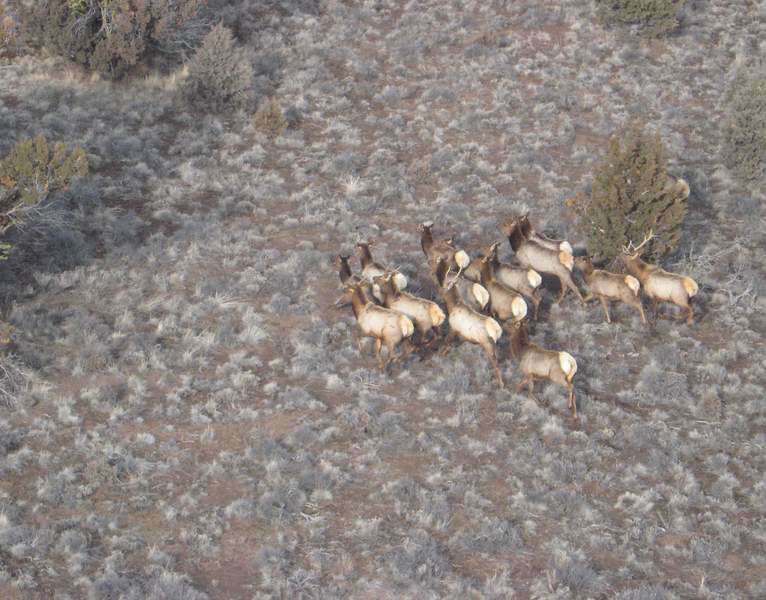Elk hunting in Central Oregon
Published 4:00 am Thursday, November 17, 2011

- A herd of elk is pictured in the Ochoco Mountains. (Oregon Department of Fish and Wildlife/Submitted photo)
Sometimes, the later, the better.
Second-season elk hunters in Central Oregon’s Ochoco District enjoyed a fresh dusting of snow to help them track bulls through the mountains and meadows.
The result was likely more success for those later hunters in the second season for Rocky Mountain elk (Nov. 5-13) than for those in the first season (Oct. 26-30), according to Corey Heath, a biologist for the Oregon Department of Fish and Wildlife in Prineville.
“Hunting conditions were excellent,” Heath said. “Both seasons, but especially second season — a little snow, mild temperatures, good tracking conditions. I heard some real good reports later on, especially second season, of people getting into bulls.”
While he will have no specific numbers until elk counts are completed next spring, Heath said he believes the overall harvest of bull elk in the Ochoco District — which includes the Ochoco, Grizzly and Maury wildlife management units — was “fair.”
Hunters struggled to find elk on opening weekend of both seasons, but the hunting improved throughout each season.
“If the elk are a little bit scattered, it takes the hunters a few days to find them and figure out how to get in on them,” Heath said.
“You kind of always see that, especially when we have the good snow, good tracking conditions. They kind of figure out where they are as the week goes on.”
The biologist added that he anticipates overall hunter success to be down compared with the last two or three years.
Part of the challenge with the controlled Rocky Mountain bull elk season, Heath said, is that hunters are drawing a tag only every few years. It can take a few days for hunters to familiarize themselves again with their designated hunting units. Therefore, hunter success can often come later in the season.
“Every year it’s a new crop of people that come in,” Heath said. “They tend to go different places within the unit. They don’t always find the elk right away.”
Second-season hunters in the Ochocos were welcomed with fresh snow, just a couple inches deep, on opening day. And the snow stayed on the ground for most of the season.
The snow allows hunters to track elk footprints, and it also quiets the hunters’ footsteps, making it less likely that they will spook the animals.
Heath said snow events are common during the second-season bull elk hunt in early November, but not all snow conditions are the same.
“From the hunter’s standpoint, this was pretty nice snow conditions,” Heath noted. “Just a couple inches and soft and powdery. It can be deep, or crusty and noisy.”
Heath said that most of the bulls killed in the three units were medium-sized, branch-antler bulls.
He also saw evidence that elk hunters in Eastern Oregon enjoyed a good season, possibly due to snowy conditions. Heath saw many harvested bulls at the hunters’ check station east of Prineville.
“We checked a lot of elk from units farther east,” the biologist said.
In the Deschutes District, the controlled Rocky Mountain elk hunting in the Paulina and East Fort Rock units (Oct. 26-30, Nov. 5-13) was slow, according to Steve George, a Bend-based wildlife biologist for the ODFW.
“First season was still pretty warm, and dry and noisy,” George said. “Second season was a little better, but they (hunters) had a hard time finding animals. For Rocky Mountain elk, it was one of the poorer years I’ve seen in the last several.”
But George said general Cascade bull elk season (Oct. 15-21) in the Metolius and Upper Deschutes units was “pretty fair,” considering hunters did not have much snow to help in tracking the animals.
He noted that hunters harvested several nice bulls and a few spikes.






